Classic Movies vs. Modern Blockbusters: A Comprehensive Comparison
Classic Movies vs. Modern Blockbusters: A Comprehensive Comparison
When it comes to movies, I have a bit of a split preference. On one hand, I’m all about the thrill and excitement of modern blockbusters. There’s something about the special effects, action-packed scenes, and immersive worlds that really captivates me. But on the other hand, when I’m in the mood for a movie with substance, depth, and a storyline that truly resonates, I turn to the classics. There’s just a timeless quality to them that modern films often struggle to replicate.
So let’s talk about these two worlds of cinema. Each has its own magic, drawing in audiences in different ways. Throughout this discussion, we’ll explore what makes classics classic, and what sets modern blockbusters apart. From the cultural impact they’ve had to the technological advancements that have shaped them, there’s so much to uncover. By diving into these details, we can gain a deeper appreciation for the evolution of filmmaking and maybe even gain some insights into our own viewing preferences. After all, knowing what we love about movies can help us choose the perfect film for any occasion.
Historical Context
Classic Movies: The Golden Age of Cinema
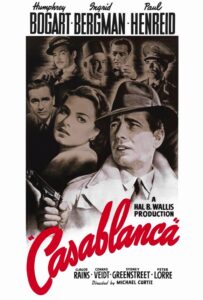
The term “classic movies” often refers to films produced during Hollywood’s Golden Age, spanning from the 1920s to the 1960s. This era was marked by the emergence of iconic studios such as MGM, Warner Bros., and Paramount. Directors like Alfred Hitchcock, Billy Wilder, and Orson Welles crafted masterpieces that have stood the test of time. Movies such as “Casablanca”, “Gone with the Wind”, and “Citizen Kane” are emblematic of this period, known for their compelling narratives, strong character development, and innovative cinematography.
Alfred Hitchcock‘s suspenseful thrillers, such as “Psycho” and “Vertigo”, introduced groundbreaking techniques in storytelling and visual composition. Billy Wilder, with films like “Sunset Boulevard” and “Double Indemnity”, masterfully blended genres, creating narratives that were both thrilling and emotionally rich. Orson Welles‘s “Citizen Kane” remains a landmark in filmmaking, lauded for its deep focus shots and innovative use of non-linear storytelling.
Modern Blockbusters: The Age of Spectacle
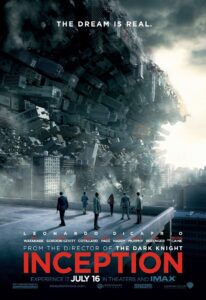
Modern blockbusters, on the other hand, began to rise in the late 1970s with the advent of films like “Jaws” and “Star Wars”. These movies set a new precedent for large-scale production and global appeal. Today, modern blockbusters are synonymous with high budgets, cutting-edge special effects, and wide-reaching marketing campaigns. Directors such as Steven Spielberg, James Cameron, and Christopher Nolan have revolutionized the industry with films like “Jurassic Park”, “Avatar”, and “Inception”.
Steven Spielberg‘s “Jaws” essentially invented the summer blockbuster, combining suspense with a broad appeal that drew massive audiences. James Cameron‘s “Titanic” and “Avatar” pushed technological boundaries, using advanced CGI and 3D technology to create immersive experiences. Christopher Nolan has redefined modern cinema with complex narratives and stunning visual effects in films like “The Dark Knight” trilogy and “Interstellar”.
Technological Advancements
Classic Movies: Innovation with Constraints
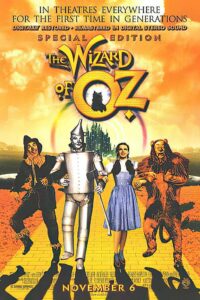
Classic movies were produced with limited technology, which often required filmmakers to be exceptionally creative. Practical effects, matte paintings, and miniatures were commonly used to create illusions. The lack of advanced technology meant that directors had to rely heavily on storytelling, dialogue, and character development to captivate audiences. Cinematographers like Gregg Toland, known for his work on “Citizen Kane”, pioneered techniques such as deep focus, which added a new dimension to visual storytelling.
Practical effects in classic films involved intricate and labor-intensive methods. For example, the transformation scene in “The Wolf Man” (1941) was achieved through painstaking frame-by-frame makeup application. Matte paintings provided expansive backgrounds, as seen in “The Wizard of Oz”, while miniatures were used to simulate large-scale scenes, such as the train wreck in “The General.”
Modern Blockbusters: Pushing the Boundaries of Visual Effects
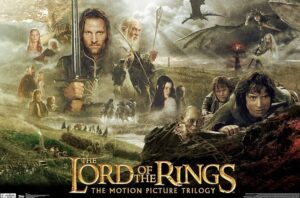
In contrast, modern blockbusters leverage the latest technological advancements to create visually stunning experiences. Computer-generated imagery (CGI), motion capture, and advanced sound design have become integral to blockbuster filmmaking. Movies like “The Avengers” and “The Matrix” showcase how technology can bring fantastical worlds and complex action sequences to life. The use of IMAX cameras and 3D technology further enhances the viewing experience, making it more immersive and engaging.
CGI has revolutionized the way visual effects are created, allowing for seamless integration of fantastical elements into live-action footage. Films like “The Lord of the Rings” trilogy utilized CGI to create entire armies and mythical creatures, setting a new standard for visual storytelling. Motion capture technology, as seen in “Avatar” and “The Planet of the Apes” series, enables actors’ performances to be digitally captured and transformed into lifelike characters, providing a level of realism previously unachievable.
Storytelling Techniques
Classic Movies: Emphasis on Narrative and Dialogue

Classic movies are often celebrated for their intricate plots and rich dialogues. The storytelling in these films is typically linear, with a clear beginning, middle, and end. Screenwriters like Billy Wilder (Sunset Boulevard, The Seven Year Itch) and F. Scott Fitzgerald (The Great Gatsby, Tender is the Night) crafted scripts that were not only engaging but also thought-provoking. Films like “Sunset Boulevard” and “Network” exemplify the power of strong narratives and character-driven stories.
In “Sunset Boulevard”, the narrative is driven by the complex relationship between a faded silent film star and a struggling screenwriter, exploring themes of fame and delusion. “Network”, written by Paddy Chayefsky, is a biting satire on the television industry, with sharp dialogues that critique media manipulation and the quest for ratings. These films rely heavily on character development and dialogue to convey their themes and engage audiences.
Modern Blockbusters: Visual Storytelling and Spectacle
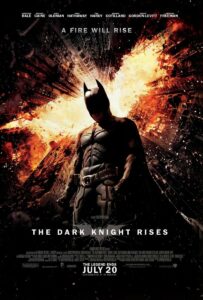
Modern blockbusters, while still valuing narrative, often prioritize visual spectacle and high-concept ideas. The storytelling in these films can be non-linear, incorporating flashbacks, parallel narratives, and intricate plot twists. Directors like Quentin Tarantino and Christopher Nolan are known for their unconventional storytelling methods. Movies such as “Pulp Fiction” and “The Dark Knight” illustrate how modern blockbusters use visual storytelling to enhance their narratives, making them more dynamic and engaging.
“Pulp Fiction” employs a non-linear narrative structure, interweaving multiple storylines that eventually converge, creating a rich tapestry of interconnected characters and events. “The Dark Knight” combines traditional narrative elements with groundbreaking action sequences and complex character arcs, resulting in a film that is both intellectually stimulating and visually arresting. These techniques allow modern blockbusters to offer more layered and immersive storytelling experiences.
Critical and Commercial Success
Classic Movies: Critical Acclaim
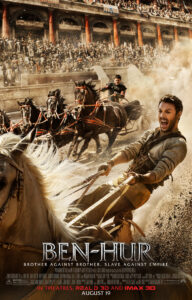
Classic movies often garnered critical acclaim, winning numerous awards and accolades. Films like “Ben-Hur”, which won 11 Academy Awards, and “Lawrence of Arabia”, known for its epic scope and stunning cinematography, are celebrated as milestones in film history. The critical success of these films is a testament to their enduring quality and artistic merit.
“Ben-Hur” is renowned for its grand scale and impressive set pieces, particularly the iconic chariot race scene, which remains a benchmark in action filmmaking. “Lawrence of Arabia” is praised for its sweeping landscapes and complex portrayal of its titular character, offering a rich cinematic experience that has influenced countless filmmakers. These films continue to be regarded as models of cinematic excellence.
Modern Blockbusters: Box Office Titans
![]()
Modern blockbusters are characterized by their massive box office success. Movies like “Avatar” and “Avengers: Endgame” have shattered records, grossing billions of dollars worldwide. The financial success of these films reflects their broad appeal and the power of modern marketing strategies. Blockbusters often attract large audiences, including those who might not typically watch movies, due to their event-like nature and extensive media coverage.
“Avatar” utilized cutting-edge 3D technology to create an immersive world of Pandora, drawing audiences with its stunning visual effects and groundbreaking use of CGI. “Avengers: Endgame” culminated a decade-long narrative arc within the Marvel Cinematic Universe, bringing together beloved characters in a monumental showdown that captivated global audiences and set new box office records. These films exemplify how modern blockbusters leverage advanced technology and comprehensive marketing campaigns to achieve unparalleled commercial success.
Conclusion
 In conclusion, both classic movies and modern blockbusters offer unique experiences that cater to different tastes and preferences. Classic movies are revered for their storytelling, character development, and timeless appeal, while modern blockbusters captivate audiences with their technological prowess and visual spectacle. Understanding the differences between these two genres allows us to appreciate the evolution of cinema and the diverse range of stories it brings to life. Whether you prefer the nostalgia of classic films or the excitement of modern blockbusters, there is no denying the significant impact both have had on the world of cinema.
In conclusion, both classic movies and modern blockbusters offer unique experiences that cater to different tastes and preferences. Classic movies are revered for their storytelling, character development, and timeless appeal, while modern blockbusters captivate audiences with their technological prowess and visual spectacle. Understanding the differences between these two genres allows us to appreciate the evolution of cinema and the diverse range of stories it brings to life. Whether you prefer the nostalgia of classic films or the excitement of modern blockbusters, there is no denying the significant impact both have had on the world of cinema.
Classic movies offer a window into the past, showcasing the artistry and innovation of early filmmakers who laid the foundation for modern cinema. They invite viewers to engage with stories that have shaped cultural and social perspectives, fostering a deep appreciation for the craft of filmmaking. Modern blockbusters, on the other hand, push the boundaries of what is possible, using the latest technology to create immersive and exhilarating experiences that captivate global audiences.
As we continue to explore the vast landscape of cinema, it is important to recognize and celebrate the contributions of both classic movies and modern blockbusters. Each genre, in its own way, enriches our understanding of storytelling and the human experience, offering endless opportunities for discovery and enjoyment.


You May Also Like

How to Avoid Being an Annoying Tourist While Dining Abroad
June 6, 2024
Understanding Different Types of Collagen and Their Absorption
June 4, 2024